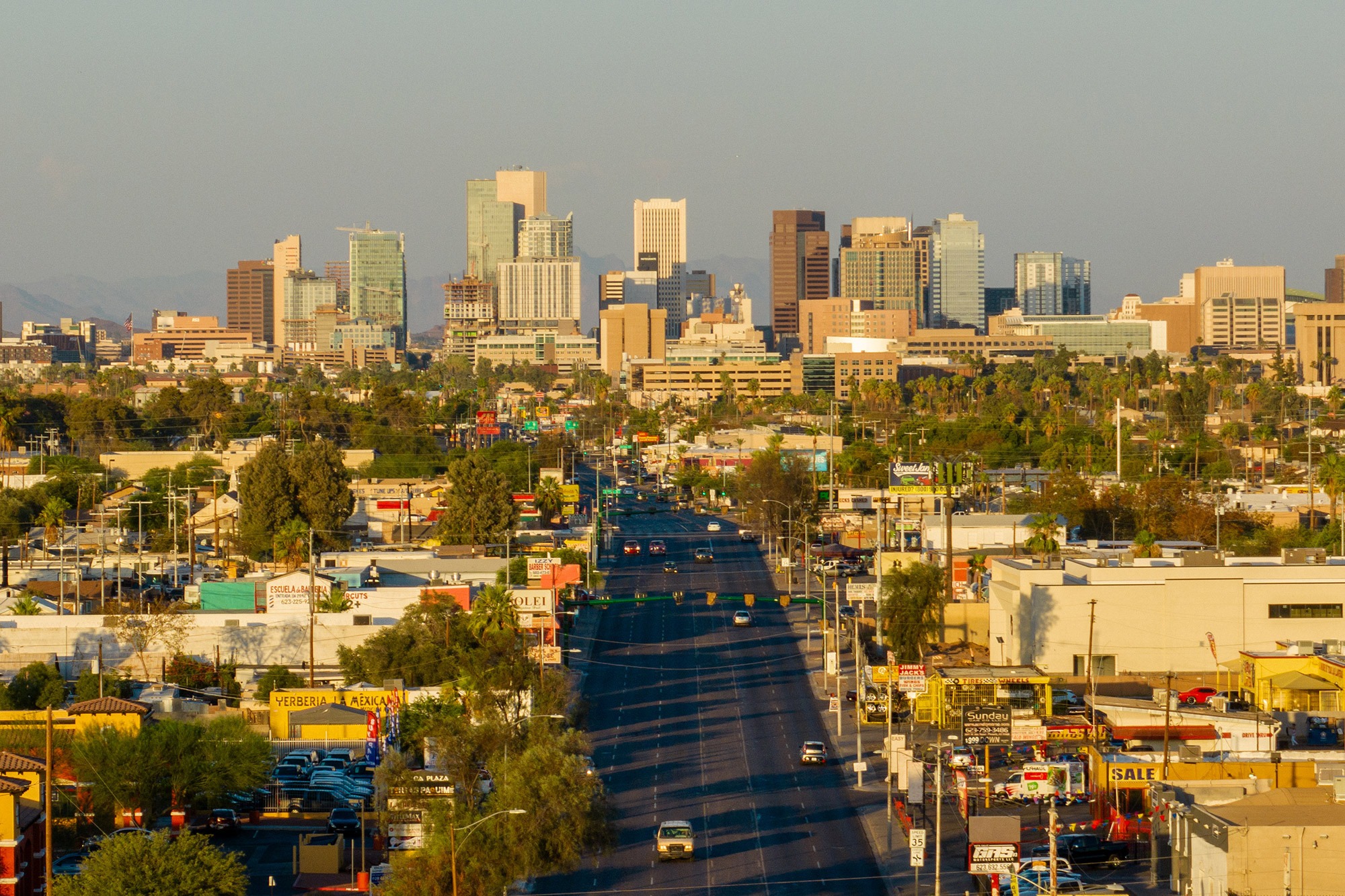The following is a sponsored op-ed written by Kate Gallego, Mayor of Phoenix, Arizona and Joy Belmonte, Mayor of Quezon City, the Philippines and sponsored by C40 Cities.
This summer, cities around the world broke temperature records once again. The results were devastating: Extreme heat now kills nearly half a million people each year, and the danger keeps rising. By 2050, the number of people in cities exposed to life-threatening heat is expected to increase fivefold.
From the desert of Phoenix in the United States to the humid streets of Quezon City in the Philippines, mayors are facing the same new reality: Heat is here to stay, and it is impacting every element of city life. That’s why we — along with more than 30 other mayors from C40 Cities, a global network of nearly 100 of the world’s biggest cities tackling the climate emergency — are joining forces to protect our people today and prepare our communities for a hotter tomorrow. Through the new C40 Cool Cities Accelerator, we’ll work together to speed up bold and inclusive climate action that meets the urgency of this growing threat.
In some ways, our cities couldn’t be more different. Phoenix, America’s fifth largest city, sits in Arizona’s Sonoran Desert, and sees more than 300 days of sunshine a year. Quezon City, the most populous city in the Philippines, faces sweltering humidity and the annual risk of typhoons. Yet both cities are on the front lines of rising temperatures that threaten health, strain our power grids, and deepen inequality.
Extreme heat is the deadliest climate hazard, but it’s also the quietest. It kills through heatstroke and dehydration, and by worsening heart and respiratory conditions. It’s often felt most by the people with the fewest resources to cope: older adults, children, outdoor workers, and low-income communities. In Phoenix, residents in low-income neighbourhoods can experience temperatures several degrees higher than in wealthier parts of the city. In Quezon City, densely populated neighborhoods can become dangerous heat traps.
Marcus Lindstrom / Getty Images
We refuse to accept a future in which a heatwave becomes a death sentence for those with the least, and whose responsibility for the climate crisis is disproportionately small. The Cool Cities Accelerator is our shared plan to prevent that. In line with COP30’s call for a ‘decade of delivery,’ this provides a practical framework for mayors to act boldly and share what works.
First, we’re protecting lives right now. Participating cities are appointing heat leaders, improving early-warning systems, and coordinating emergency responses across agencies. Phoenix, for example, created the US’s first publicly-funded Office of Heat Response and Mitigation, expanded access to chilled water stations, and opened cooling and hydration stations, including overnight cooling center options to bring relief where it’s needed most. Meanwhile, Quezon City is currently mapping heat-vulnerable communities and developing a citywide heat-health action plan. It has already adjusted work hours for outdoor workers, and introduced heat-tolerant crops across more than 1,400 urban farms.
The goal is to build long-term resilience. Within five years, cities in the Accelerator will integrate cooling into building codes, redesign streets for shade and airflow, and expand tree canopies and green corridors. Phoenix is piloting reflective ‘cool pavements’, planting thousands of trees, and building artistic shade structures and setting regional standards for heat-ready infrastructure. Quezon City is restoring parks and greening schools and public spaces. As part of these efforts, the city has supported local groups turning vacant lots into small forests and gardens, while encouraging private development to adopt greener designs under its Green Building Ordinance. These efforts save lives, and cut energy bills while improving neighbourhoods.
But urban heat doesn’t stop at city limits, and neither should our solutions. That’s why collaboration is at the heart of the Cool Cities Accelerator. Thirty-two cities — from Austin to Athens and Singapore to Santiago — are now exchanging data and design ideas. The details on the ground obviously differ, but the solutions we craft together are remarkably similar, creating more shade, better design, and better care for the most vulnerable. When our teams share lessons on early-warning systems, or how to engage with our communities, we all move faster and more effectively.
For too long, extreme heat has been under-measured and under-estimated. We can build cities that are not only cooler, but more fair. But to do so, we must act together, and we must act now. We need to deliver solutions that both keep people alive today, and allow future generations to thrive.
C40 is a network of nearly 100 mayors of the world’s leading cities working to deliver the urgent action needed right now to confront the climate crisis and create a future where everyone, everywhere, can thrive. Mayors of C40 cities are committed to using a science-based and people-focused approach to limit global heating in line with the Paris Agreement and build healthy, equitable and resilient communities.
Source link
Grist Creative grist.org



